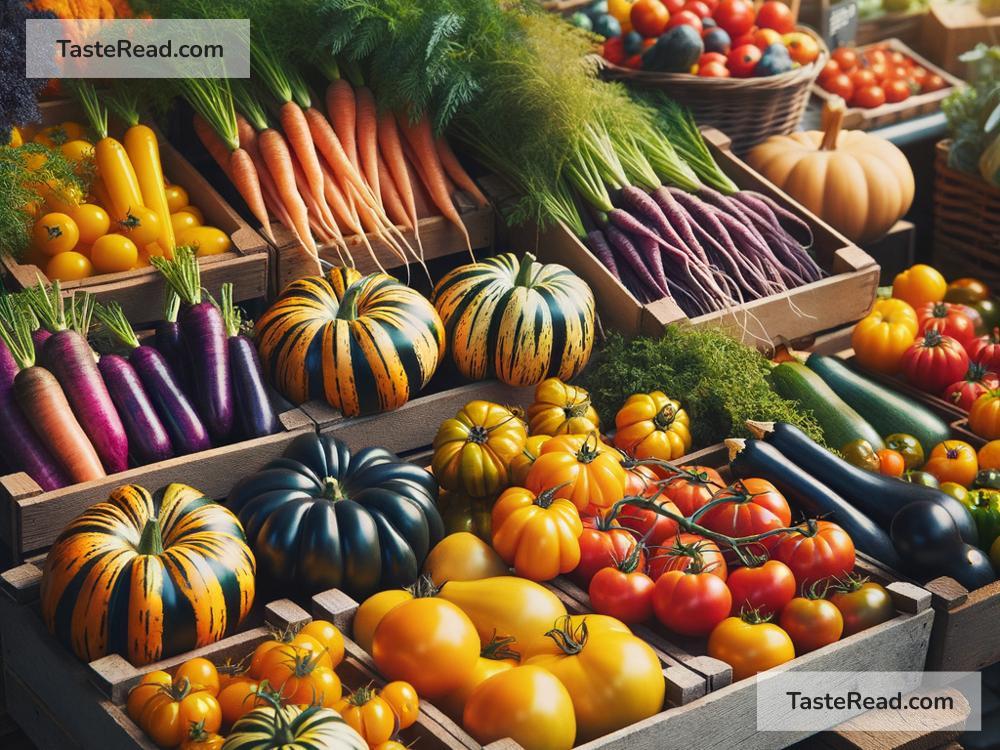Why Heirloom Varieties of Fruits and Vegetables Have Richer Flavors
If you’ve ever bitten into a tomato from your local supermarket and thought, “Hmm, this tastes kind of bland,” you’re not alone. Many fruits and vegetables sold today are grown to look good, last longer on shelves, and produce large quantities. Unfortunately, flavor often takes a backseat to these priorities. That’s where heirloom varieties of fruits and vegetables come in—they’re celebrated for their rich flavors and unique characteristics.
So, what are heirloom varieties, and why do they taste better? Let’s dig into the reasons, explained in simple terms.
What Are Heirloom Fruits and Vegetables?
Heirloom fruits and vegetables are older plant varieties that have been grown, saved, and passed on through generations, often for 50 years or more. While modern crops are often developed using hybrid breeding or genetic modification, heirlooms are typically “open-pollinated.” This means they rely on natural processes like bees, birds, and wind to reproduce, rather than being manipulated in a controlled lab environment.
These heirlooms come in all kinds of shapes, sizes, colors, and flavors. You might find funny-looking carrots, striped tomatoes, or purple potatoes—all grown for the joy of their taste rather than perfect symmetry. They are often cultivated in smaller gardens and farms rather than mass-produced fields.
Why Do Heirloom Fruits and Vegetables Taste Better?
The secret to their better flavor lies in nature, tradition, and quality over quantity. Here’s a breakdown of the reasons heirloom varieties are known for having richer flavors:
1. Flavor Over Appearance
Modern fruits and vegetables are often bred to look attractive and uniform—bright red tomatoes, spotless apples, and perfectly straight cucumbers. These traits may appeal visually, but flavor is rarely the top priority. With heirloom varieties, flavor is king. Farmers and gardeners choose heirloom seeds specifically because they produce fruits and vegetables with deep, complex, and memorable tastes.
For example, the Cherokee Purple tomato is an heirloom variety prized for its smoky, sweet flavor. Compare that to a typical supermarket tomato, bred to look shiny but often described as watery or dull. Heirloom growers focus on taste, not just looks.
2. No Compromise for Shelf Life
Another reason supermarket produce can taste bland is that it’s bred for durability. Big food producers create crops that are tough enough to survive transport and remain fresh-looking for weeks. Unfortunately, this often leads to compromises in flavor. Heirloom crops, on the other hand, aren’t concerned with shelf life. They’re grown for immediate consumption or local markets, allowing them to retain their full, natural taste.
For example, sweet corn is best eaten within hours of being harvested, while heirloom varieties of sweet corn are carefully preserved to maintain flavor—even if they don’t last as long on store shelves.
3. Traditional Farming Methods
Heirloom crops are often grown using traditional, sustainable farming practices. Unlike industrial farming methods that prioritize quantity, heirloom growers focus on quality. Healthy soil and mindful growing techniques contribute to stronger, tastier produce. Without heavy reliance on chemical fertilizers or overproduction, heirloom fruits and veggies thrive in a way that preserves and enhances their natural taste.
4. Higher Nutritional Value
Heirloom varieties not only taste better but can also be more nutritious. Modern crops grown for speed and volume often lose nutrients in the process. Heirlooms are carefully cultivated, allowing them to develop richer nutrient profiles naturally. For example, some heirloom carrots have more antioxidants and vitamins than their modern counterparts, which makes their flavor brighter.
5. Diversity of Varieties
Unlike mass-produced crops, heirloom varieties come in endless forms, each with its own unique taste. Instead of growing one kind of tomato that will appeal to everyone, heirloom growers cultivate many types—sweet, tangy, smoky, or citrusy. This diversity allows people to experience flavors they might never have encountered in a grocery store.
One heirloom tomato might taste like sunshine on a warm summer day, while another might have a rich, savory kick. You get to enjoy the full spectrum of nature’s possibilities.
Why Heirlooms Matter
In addition to their flavor, heirloom crops play an important role in preserving biodiversity. Mass farming focuses on only a handful of staple crops, which can make entire food systems vulnerable to diseases or climate change. Heirloom varieties, with their unique genetic traits, create a more resilient food supply. Plus, they help keep tradition alive as farmers pass down seeds from one generation to the next.
How to Get Heirloom Fruits and Vegetables
Heirloom produce may not always be easy to find at big-box stores, but you can get them from farmers’ markets, small local grocery stores, or by growing your own in a backyard garden. Many gardening enthusiasts love heirloom seeds because of the superior taste and sense of satisfaction that comes from nurturing these special plants.
If you’re new to heirlooms, start with popular varieties like Brandywine tomatoes, Dragon carrots, or Moon & Stars watermelons. Each bite is like an adventure in flavor!
A Taste Worth the Effort
Heirloom fruits and vegetables remind us of what produce is supposed to taste like—rich, vibrant, and full of life. They may not always look perfect, and they might not last as long on the shelf, but their unique flavors are worth every effort. As more people appreciate heirlooms, the world has a chance to rediscover the joy of food grown the old-fashioned way.
Next time you bite into a bland vegetable from the store, consider looking for heirloom alternatives. Your taste buds will thank you!

